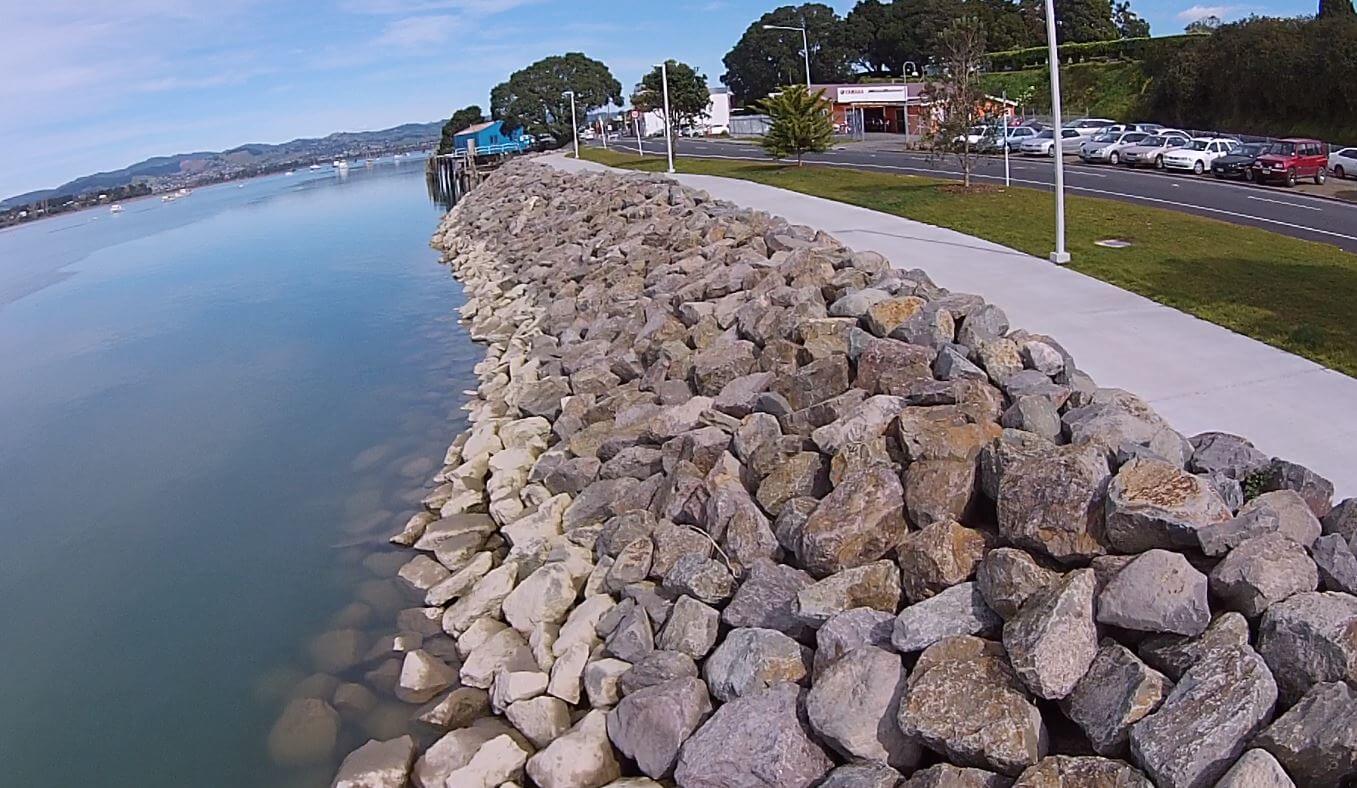
Image Source: Google
Riverbanks, coasts, and other water bodies are often subject to erosion caused by waves, currents, and other natural forces. To combat this erosion and protect these areas, engineers often turn to rock revetments. Rock revetments are sloping structures made up of interlocking rocks that absorb and deflect the energy of the water, ultimately preventing erosion. If you need more information about rock revetment construction, you may visit Coast Seawall.
The construction of rock revetments is a complex process that involves careful planning, precise design, and skilled implementation. In this article, we will explore the science behind rock revetment construction, from the initial design stages to the final implementation.
The Design Process
Designing a rock revetment involves several key steps to ensure its effectiveness in protecting the coastline or riverbank. Engineers consider various factors such as wave energy, tidal patterns, sediment transport, and the overall geomorphology of the area. The design process includes the following essential elements:
Site Assessment
- Understanding the specific site conditions, including wave heights, water levels, and soil characteristics.
- Assessing the potential for erosion and determining the extent of protection required.
Wave and Hydrodynamic Analysis
- Conducting detailed studies to analyze wave patterns, direction, and energy levels.
- Calculating the design wave height to determine the size and slope of the revetment.
Material Selection
- Choosing appropriate rock sizes and types based on their durability, weight, and interlocking characteristics.
- Considering the availability and cost of materials for construction.
Construction Techniques
Once the design phase is complete, the construction of the rock revetment can begin. This stage involves several key techniques and considerations to ensure the successful implementation of the structure:
Preparation of the Site
- Clearing the area of any vegetation, debris, or existing structures that may interfere with construction.
- Grading and leveling the site to provide a stable foundation for the revetment.
Placement of Rocks
- Interlocking the rocks in a specific pattern to create a stable and erosion-resistant structure.
- Ensuring proper alignment and tight packing of rocks to prevent movement under wave action.
Filter Layer Installation
- Adding a layer of geotextile fabric or granular material to prevent soil erosion and provide drainage behind the revetment.
- Ensuring proper compaction and thickness of the filter layer to enhance stability.
Quality Control and Monitoring
Once the rock revetment is in place, quality control measures and ongoing monitoring are essential to ensure its long-term performance and effectiveness. This includes:
Inspections and Maintenance
- Regular inspections to check for any signs of damage, erosion, or structural instability.
- Implementing timely repairs and maintenance to address any issues and prevent further damage.
Performance Monitoring
- Monitoring wave action, sediment movement, and revetment performance over time.
- Using data collected to assess the effectiveness of the structure and make any necessary adjustments.
Environmental Considerations
- Ensuring that the construction and maintenance of the revetment comply with environmental regulations and minimize impact on habitats.
- Considering natural processes and ecosystem dynamics in the design and monitoring of the revetment.
Conclusion
Rock revetments play a crucial role in protecting shorelines and riverbanks from erosion and preserving valuable land and infrastructure. The construction of rock revetments requires a thorough understanding of the site conditions, effective design processes, and skilled implementation techniques. By following the science behind rock revetment construction and conducting thorough monitoring and maintenance, engineers can create resilient and sustainable coastal defense structures that withstand the forces of nature for years to come.